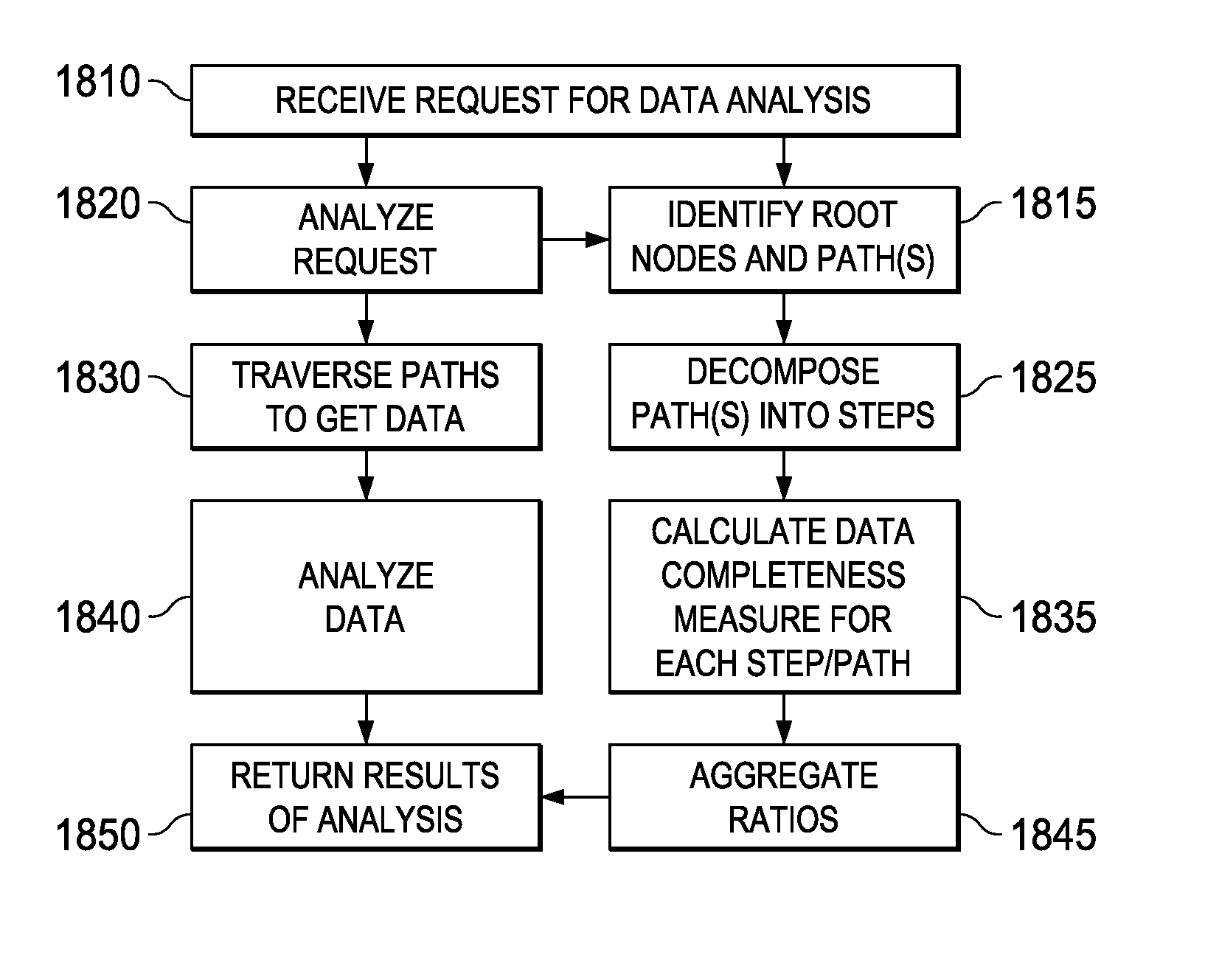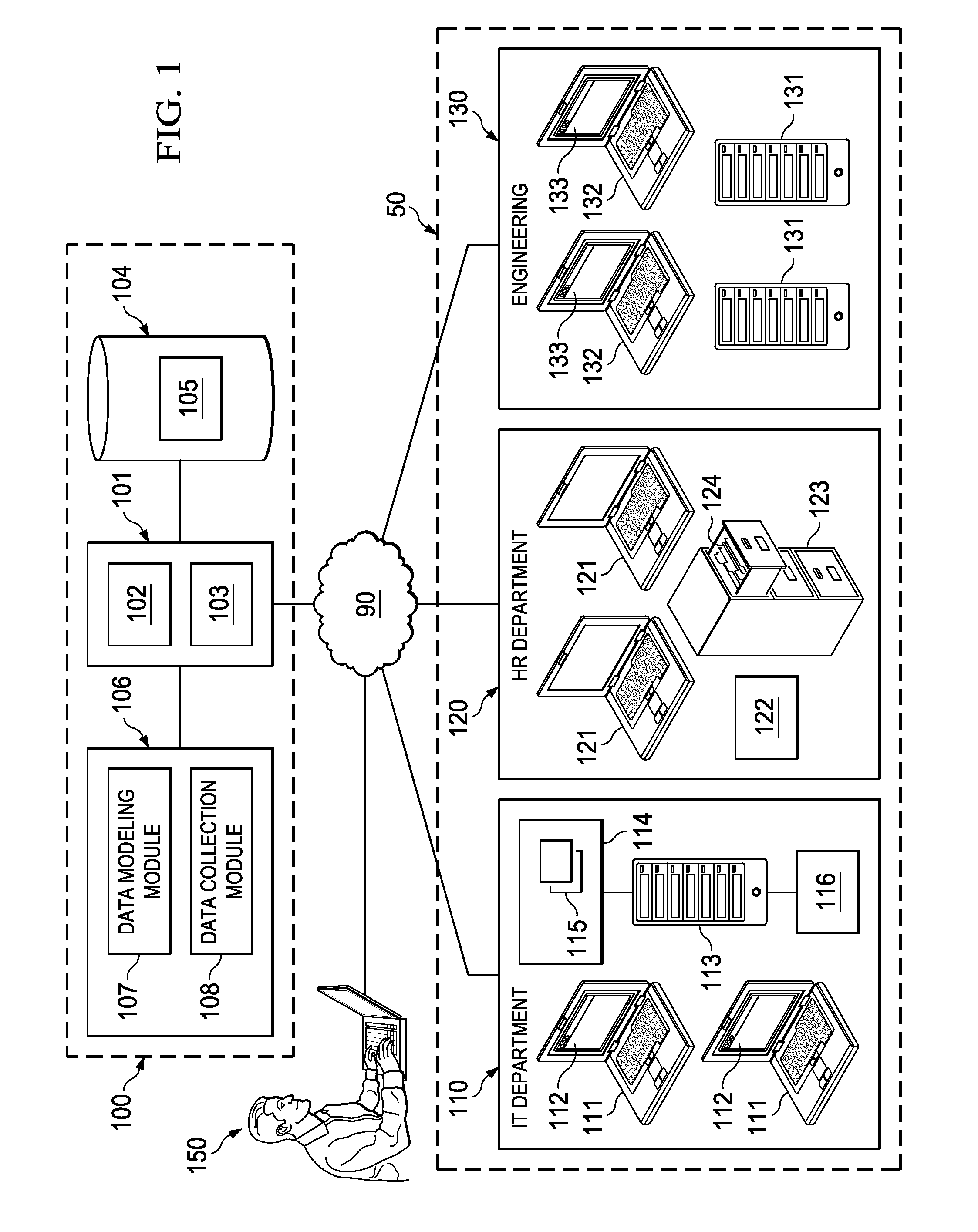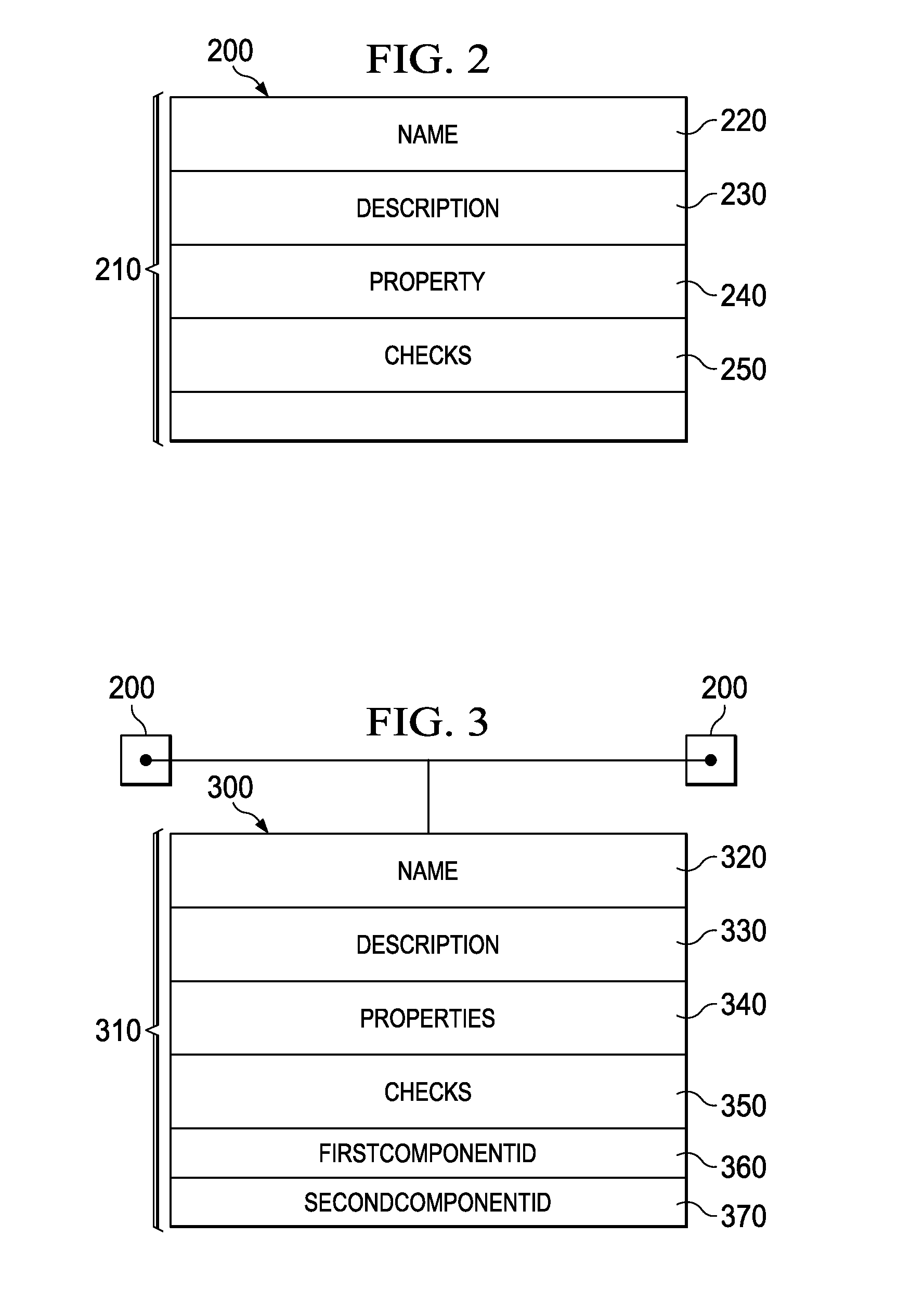Method and system for determination of data completeness for analytic data calculations
a technology of analytic data and completeness, applied in the field of model data, can solve problems such as wreaking havoc on model models, presenting challenges to sufficiently accurate modeling, and affecting the accuracy of data analysis
- Summary
- Abstract
- Description
- Claims
- Application Information
AI Technical Summary
Benefits of technology
Problems solved by technology
Method used
Image
Examples
Embodiment Construction
[0030]The detailed description and the specific examples described below, while indicating the preferred embodiments, are given by way of illustration only and not by way of limitation. Descriptions of known materials and manufacturing techniques may be omitted so as not to unnecessarily obscure the disclosure in detail. Various substitutions, modifications, additions and / or rearrangements within the spirit and / or scope of the underlying inventive concept will become apparent to those skilled in the art from this disclosure.
[0031]As used herein, the terms “comprises,”“comprising,”“includes,”“including,”“has,”“having,” or any other variation thereof, are intended to cover a non-exclusive inclusion. For example, a process, product, article, or apparatus that comprises a list of elements is not necessarily limited only those elements but may include other elements not expressly listed or inherent to such process, product, article, or apparatus.
[0032]Furthermore, the term “or” as used h...
PUM
 Login to View More
Login to View More Abstract
Description
Claims
Application Information
 Login to View More
Login to View More - R&D
- Intellectual Property
- Life Sciences
- Materials
- Tech Scout
- Unparalleled Data Quality
- Higher Quality Content
- 60% Fewer Hallucinations
Browse by: Latest US Patents, China's latest patents, Technical Efficacy Thesaurus, Application Domain, Technology Topic, Popular Technical Reports.
© 2025 PatSnap. All rights reserved.Legal|Privacy policy|Modern Slavery Act Transparency Statement|Sitemap|About US| Contact US: help@patsnap.com



